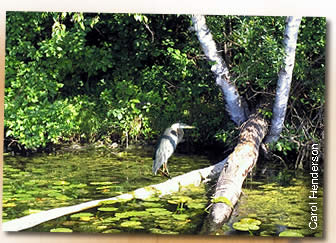| |
|
 |
Site Challenges: Dead
Trees Downed logs that extend into the water are especially valuable as basking sites for turtles and ducks, homes for salamanders and frogs, and a haven for the insects, worms and microorganisms so critical in the food web. The tangle of dead tree branches underwater protects juvenile fish from predators and provides a surface for insects and other invertebrates that fish eat. Shoreline owners are encouraged to preserve standing and fallen trees on their property to provide fish and wildlife habitat, unless they pose a hazard. |
